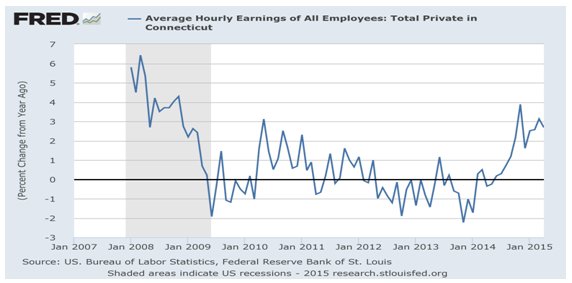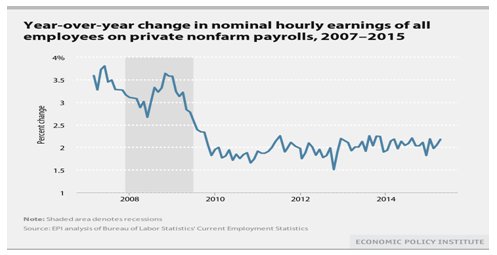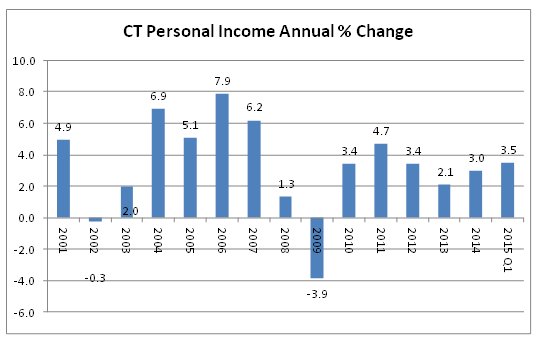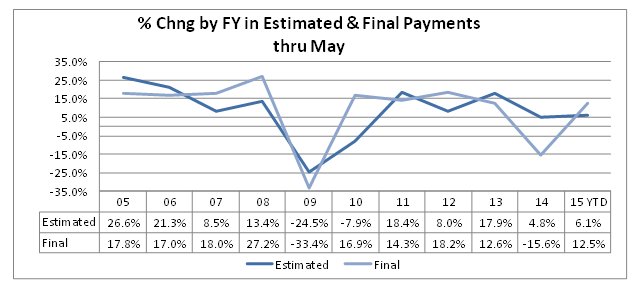Comptroller Kevin Lembo Archive > News
COMPTROLLER LEMBO REPORTS $115.7-MILLION DEFICIT FOR FISCAL YEAR 2015Comptroller Kevin Lembo announced today that the state is on track to end Fiscal Year 2015 with a $115.7-million deficit.
While Fiscal Year 2016 officially begins today, a final deficit for Fiscal Year 2015 will be determined later this year after the state's financial books have been audited and closed.
In a letter to Gov. Dannel P. Malloy, Lembo said he is in general agreement with the Office of Policy and Management's (OPM) latest deficit estimate, which decreased by $49.2 million over last month's projection.
"These projections will undoubtedly undergo further adjustment as accounting corrections continue to be posted after June 30 and revenue and expenditure accruals are processed," Lembo reported. "Any remaining General Fund deficit for Fiscal Year 2015 will be eliminated through a transfer from the Budget Reserve Fund."
The deficit has receded somewhat due to revenue improving upward by about $48.6 million this month, Lembo said. The corporation tax estimate has been increased by $44 million due to exceptionally strong June receipts.
"This tax category had been expected to record a decline in revenue from last fiscal year due to expanded tax credits; however, the corporation tax is now expected to show a slight gain over last fiscal year," Lembo said.
The projection for escheated property is also up by $36 million this month due to above-average gains realized on the sale of securities - although these gains are all offset by a $35-million decrease to the income tax as a result of lower-than-anticipated June receipts. In total, General Fund revenue is expected to fall $141.7 million short of the original budget plan, Lembo said.
"While some revenue categories have exceeded expectations - such as the corporations tax - overall economic growth has remained relatively stagnant," Lembo said. "The recovery from the last recession has been slower and more gradual than we need, and unlike any other we've experienced."
As predicted, the state is on track to achieve its savings target through budget management. As a result, Fiscal Year 2015 spending is falling $25.6 million below the original budget plan, Lembo said.
Looking forward, Lembo pointed to the latest economic indicators from federal and state Departments of Labor and other sources that show:

• Through the first 11 months of Fiscal Year 2015, the year-to-date
withholding portion of the income tax was running 2.4 percent above the same
period last year. For most of Fiscal Year 2015, withholding receipts have been
running slightly below the levels experienced in the prior fiscal year.
• Withholding receipts are the largest single source of state tax revenue
accounting for 62 percent of the total income tax receipts in Fiscal Year 2014
and almost 40 percent of total tax receipts in that year. As the graph below
shows, with the exception of the increases experienced in Fiscal Years 2011 and
2012 that resulted from tax increases, withholding growth has been well below
normal post-recession levels. The slow growth in this tax category has resulted
in significant budget challenges.

• According to the Department of Labor, preliminary figures show that
Connecticut gained 6,400 payroll positions in May. Connecticut has gained 26,100
jobs over the past 12-month period. Over the entire 2014 calendar year, the
state added 25,100 payroll positions. April's original estimate of a job gain of
1,200 positions was revised downward by 1,800 positions to a job loss of 600
payroll positions.

• Connecticut has now recovered 97,800 positions, or 82.2 percent of the
119,000 seasonally adjusted total nonfarm jobs that were lost in the state
during the major March 2008 - February 2010 employment downturn. Connecticut's
jobs recovery is now 63 months old and is averaging approximately 1,552 jobs per
month since February 2010. The state needs to reach the 1,713,000 level to reach
a clear nonfarm employment recovery. This will require an additional 21,200
nonfarm jobs.
• The table below shows the distribution of employment gains and losses by major
employment sector over the latest 12-month period ending in May.

• U.S. employment has been advancing at a rate of 2.2 percent over the
12-month period ending in April; Connecticut's employment growth was 1.6 percent
for the same period.
• Connecticut's unemployment rate was 6.0 percent in May; the national
unemployment rate was 5.5 percent. Connecticut's unemployment rate has continued
to decline from a high of 9.5 percent in October 2010.
• There are approximately 115,158 unemployed workers in Connecticut. A low of
36,500 unemployed workers was recorded in October of 2000. The number of
unemployed state workers hit a recessionary high of 177,200 in December of 2010.
![]()
• The Department of Labor reports that average hourly earnings at $28.70, not
seasonally adjusted, were up 88 cents, or 3.2 percent, from the May 2014
estimate. The resulting average private sector weekly pay was calculated at
$955.71, up $23.74, or 2.5 percent higher than a year ago.
• The graph below shows the year-over-year percent change in hourly wages in
Connecticut. Wage growth was exceeding 6 percent as the state entered the
recession and has exhibited an erratic pattern in the post-recession period.
This trend has contributed to the slow growth in state withholding tax receipts
discussed above.

• Like in Connecticut, the national rate of wage growth has been erratic and far from the levels attained prior to the recession.

• The 12-month percent change in the Consumer Price Index for All Urban
Consumers (CPI-U, U.S. City Average, not seasonally adjusted) in April 2015 was
-0.2 percent (still deflating).
• Based on data released by the Bureau of Economic Analysis on June 22 for the
first quarter of 2015, personal income in Connecticut grew at a rate of 3.5
percent from the same quarter last year. This compares to a national growth rate
of 4.4 percent. Connecticut was ranked 24th nationally in quarterly growth based
on first-quarter data. Results for the second quarter will be released on
September 30.
• The chart below shows the annual trend in Connecticut personal income over
time, which is well off the pace set during the last post-recessionary period.


• According to a report from the Connecticut Realtors released on June 25,
Connecticut single-family home sales rose 3.7 percent in May from the same month
last year. The median home price fell slightly over that period from $263,000 to
$262,000. The sale of townhouses and condominium in the state decreased by 1.9
percent from May of last year; however, the median price of those units
increased by 3.2 percent during the period rising from $158,500 to $163,500.
• Housing permits doubled between April and May, however, a majority of the new
permits related to apartment development in Danbury.
• The increase in development of apartments is consistent with a significant
shift in homeownership rates nationally and in Connecticut over the past
twenty-five year. The US homeownership rate rose to a high of more than 69
percent during the housing boom in the mid-2000s and has now fallen to 63.7
percent. While home ownership rates in Connecticut are higher than the national
numbers, the downward trend in homeownership is similar to the US experience.

Consumers
• Sales tax receipts through May of Fiscal Year 2015 were up 5.4 percent over
last year. The sales tax is on track to complete the year almost $43.8 million
above the original budget estimate.
• May advance retail sales were up 1.2 percent from April. Sales in May were 2.7
percent above May of last year. Food services and drinking places had the
strongest gain at 8.9 percent followed by auto sales at 7.9 percent and sporting
goods, hobby, book and music stores up 6 percent. Gasoline stations continued to
post double-digit declines due to the low price of gasoline as compared to May
of last year.
• The Federal Reserve reported that April consumer credit increased at a
seasonally adjusted annual rate of 7.3 percent. This is acceleration in credit
demand from the first two months of 2015. Revolving credit, primarily credit
cards, increased at an annual rate of 11.6 percent, while non-revolving credit,
which includes auto loans and student loans, increased at an annual rate of 5.8
percent. The growth in credit card debt in April was especially strong. It may
relate to a spring thaw in consumer spending.
Business and Economic Growth
• Statistics released by the Bureau of Economic Analysis on June 10 showed
that the state's GDP growth in 2014 was 0.6 percent, ranking Connecticut at
number 42 in the nation in overall economic growth.
• According to the Connecticut Center for Economic Analysis (CCEA) at the
University of Connecticut, the state's reported output was below the level
attained in 2006. This resulted in CCEA making downward revisions to its
projections for Connecticut economic growth moving into the next biennium. In a
more pessimistic scenario modeled by CCEA, most growth occurs in 2015 before
stagnating in 2016.
• In its 2015 ranking of top business states, CNBC ranked Connecticut at number
33 overall. CNBC uses 60 measures of state competitiveness and assigns points
based on the individual state's ranking. Those metrics are then separated into
10 broad categories (e.g. cost of doing business, infrastructure, workforce,
quality of life, etc.). The 10 categories are weighted based on their use in
state economic development marketing material. The top five states were
Minnesota, Texas, Utah, Colorado, and Georgia. The five bottom states were
Hawaii, West Virginia, Rhode Island, Alaska, and Louisiana.
• On June 24, the Bureau of Economic Analysis revised its growth figures for the
national economy. The Bureau reports that GDP contacted by 0.2 percent in the
first quarter of 2015. This followed 2.2-percent growth in the fourth quarter.
• Corporate profits were down slightly in 2014. After gains in the second and
third quarters of 2014, profits fell in the fourth quarter. The first quarter of
2015 posted a decline of 5.2 percent from the preceding quarter; however,
profits were running 4.5 percent above the same period one year ago.
• The Department of Labor's General Drift Indicators are composite measures of
the four-quarter change in three coincident (Connecticut Manufacturing
Production Index, nonfarm employment, and real personal income) and four leading
(housing permits, manufacturing average weekly hours, Hartford help-wanted
advertising, and initial unemployment claims) economic variables, and are
indexed so 1986 = 100. The index has been showing a general upward trend
although it remains well below pre-recession levels.

Stock Market
• Estimated income tax payments, which are influenced by capital gains
receipts, were trending 6.1 percent higher on a year-to-date basis thru May from
the same period one year ago. The chart below shows the trends in estimated and
final income tax payments since 2005.
• The final payment portion of the income tax was growing at a year-to-date rate
of 12.5 percent through May as compared to the same period last year. This was
under budget expectations and resulted in a downward adjustment in the income
tax estimate of $65.5 million from the initial budget projection.

• Over the past 12 months, the Dow has posted a gain of 6.4 percent with significant monthly swings.

• As a result of the monthly volatility, the Dow gain on a year-to-date basis has been under 2 percent.

***END***
